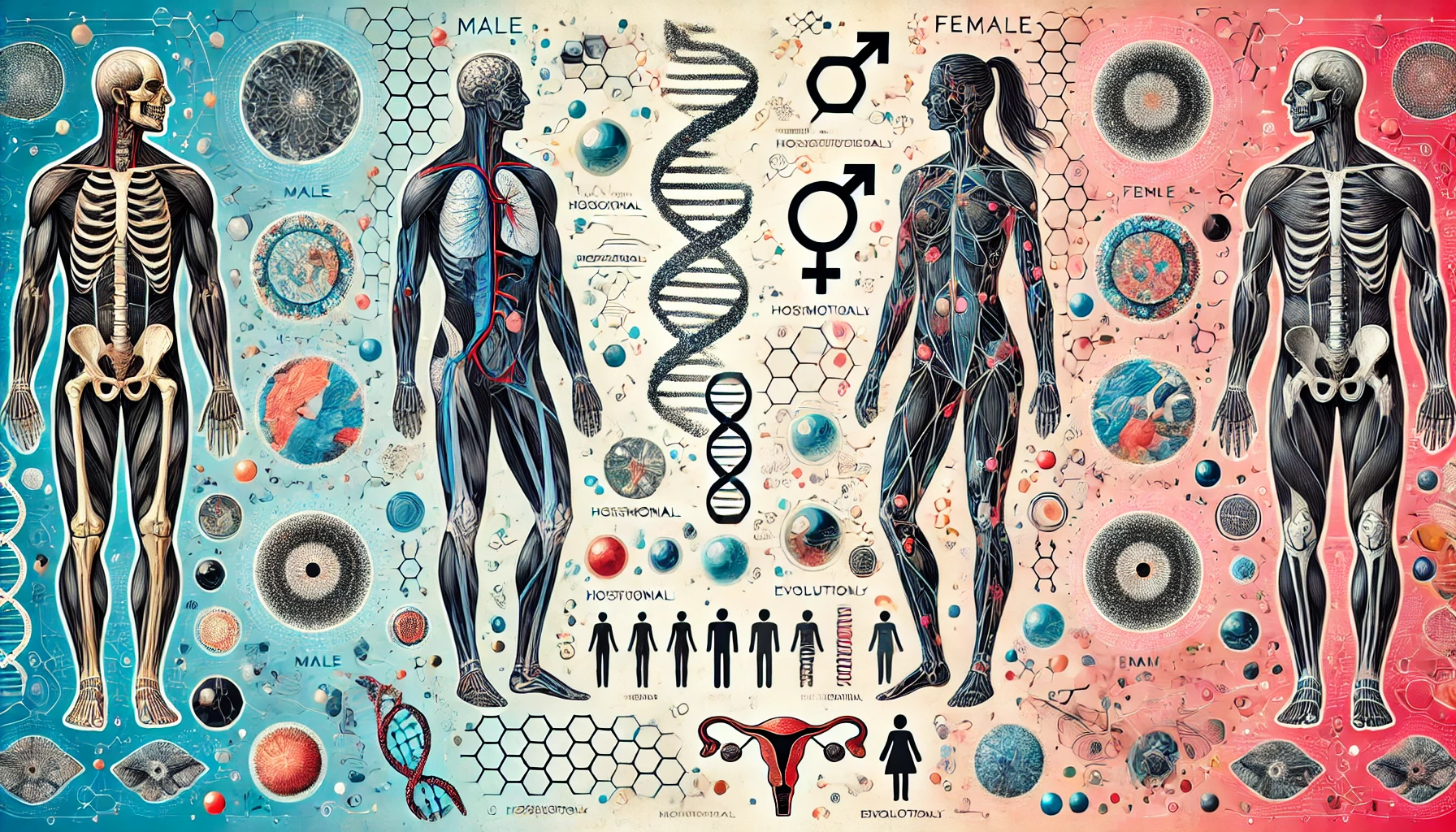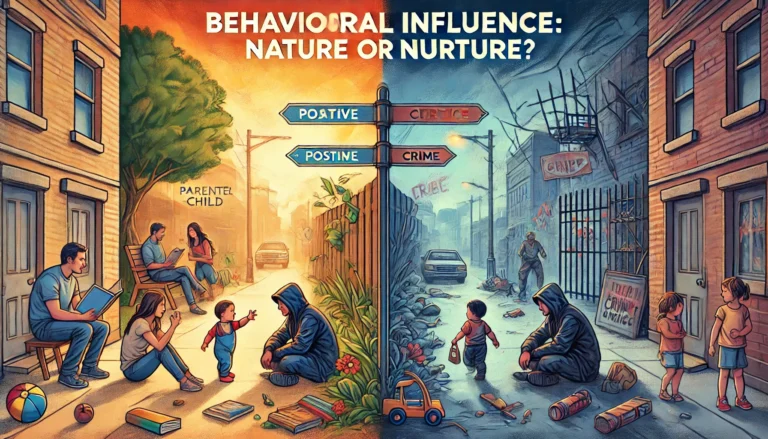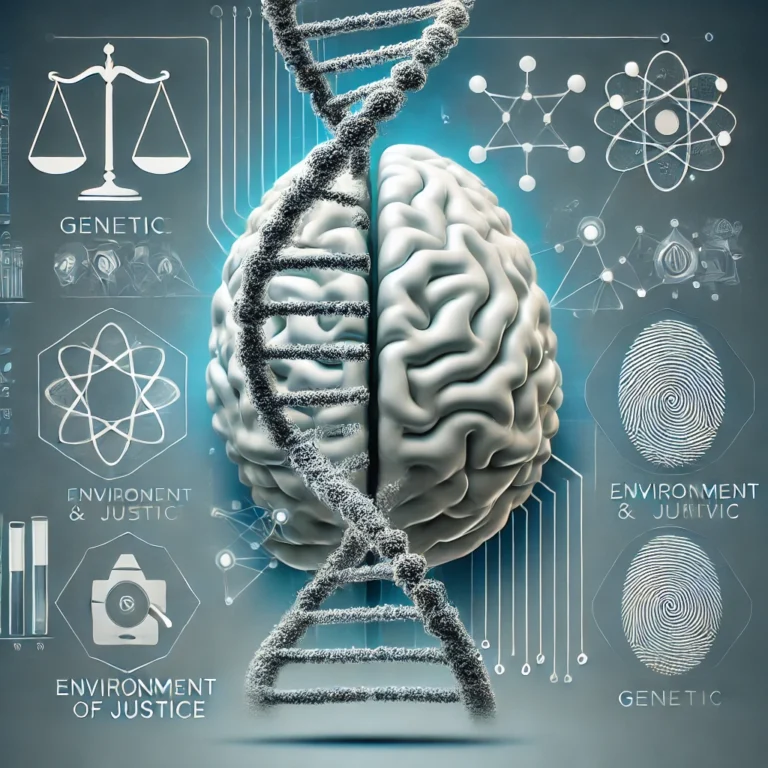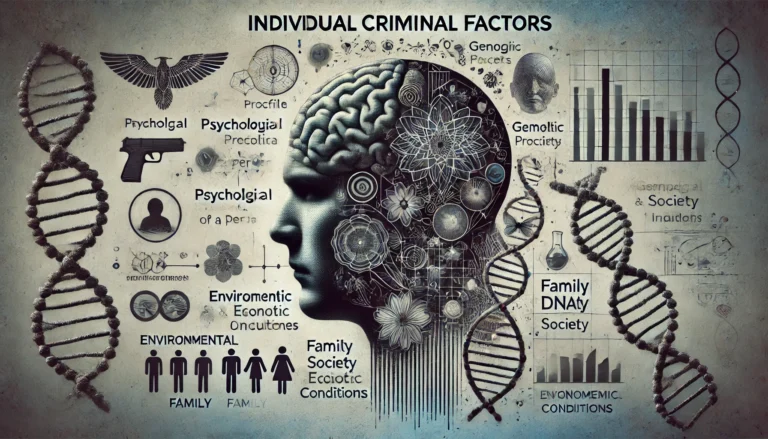Men and Women in Criminology
- Hook: Understanding the biological, physiological, and evolutionary differences between male and female bodies is essential in medicine, psychology, and anthropology.
- Thesis Statement: This article delves into the scientific reasons for the distinctions in anatomy, physiology, and hormonal influences between men and women, highlighting their roles in human development and survival.
1. Genetic Foundations of Sex Differences
Chromosomal Basis
At the core of biological sex differences lie the chromosomes. Men typically have XY chromosomes, while women have XX chromosomes. The SRY gene, located on the Y chromosome, triggers the development of male characteristics by directing the formation of testes. In its absence, the embryo typically develops ovaries, which are the default pathway in humans.
Development of Gonads
The differentiation of gonads—testes in men and ovaries in women—is a pivotal process during fetal development. These organs not only produce gametes (sperm and eggs) but also secrete hormones that shape secondary sexual characteristics. Early genetic signaling influences not just the reproductive organs but also brain development and skeletal structure, which manifest differently in males and females.
2. Hormonal Influences on Physical Development
Testosterone and Estrogen
Hormones play a fundamental role in the development and maintenance of physical traits. Testosterone, predominantly found in men, drives characteristics such as increased muscle mass, a deeper voice, and facial hair. In contrast, estrogen, the primary hormone in women, governs traits such as fat distribution in the hips and thighs and the regulation of the menstrual cycle.
Puberty and Secondary Sexual Characteristics
Puberty marks a significant divergence in male and female development. In men, the surge of testosterone results in the growth of body and facial hair, voice deepening, and muscle development. Women experience breast development, the onset of menstruation, and fat redistribution, which prepare the body for potential childbearing.
Hormonal Cycles
Women experience cyclical hormonal changes through the menstrual cycle, which influence mood, energy levels, and even cognitive function. In contrast, men’s hormonal levels, particularly testosterone, remain relatively stable, although they may fluctuate based on factors such as stress and age.
3. Anatomical Differences
Skeletal System
Men typically have denser bones and larger joint surfaces, contributing to greater physical strength. Women, on the other hand, possess a wider pelvis designed to accommodate childbirth. These differences are a direct result of evolutionary adaptations to fulfill distinct reproductive roles.
Muscle Mass and Distribution
The higher muscle-to-fat ratio in men gives them greater physical strength and endurance. Women, however, have a unique fat distribution pattern, with deposits in the hips, thighs, and breasts. This distribution supports reproductive and hormonal functions.
Cardiovascular and Respiratory Systems
Men generally have larger hearts and lungs, which enhance oxygen delivery and physical performance. Women, in contrast, tend to have a higher resting heart rate and may exhibit greater efficiency in oxygen utilization during certain activities. These differences impact athletic performance and endurance.
4. Neurological and Cognitive Differences
Brain Structure and Function
Men and women exhibit notable differences in brain structure. Men typically have larger brain volumes, which correlate with physical size, while women show greater connectivity between the hemispheres. This interconnectivity is thought to enhance multitasking and emotional processing.
Cognitive Skills
Studies suggest men excel in spatial reasoning and tasks requiring navigation, while women often outperform men in verbal skills and emotional recognition. These cognitive differences are shaped by both biological and cultural factors.
Hormonal Effects on Brain Activity
Testosterone influences behaviors such as risk-taking and aggression, while estrogen is associated with mood regulation and social bonding. These hormonal effects underscore differences in behavioral tendencies and coping mechanisms.
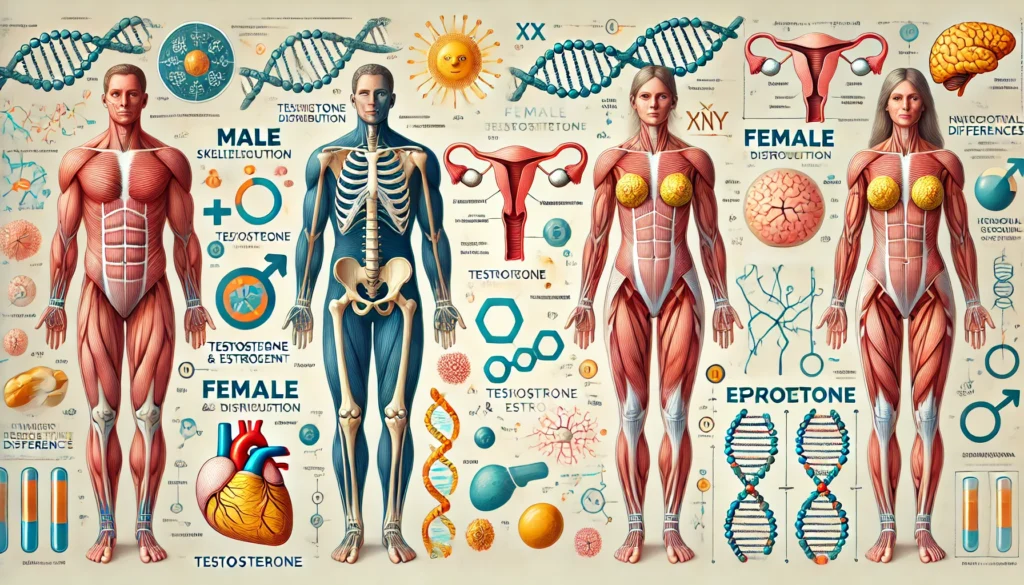
5. Reproductive System and Roles
Male Reproductive Anatomy
Men’s reproductive systems are optimized for the continuous production and delivery of sperm, driven by testosterone. The testes play a central role, not only in reproduction but also in influencing secondary sexual characteristics.
Female Reproductive Anatomy
Women’s reproductive systems are more complex, involving the ovaries, uterus, and the cyclical process of ovulation and menstruation. These systems prepare the body for pregnancy and childbirth, requiring a significant allocation of physical and hormonal resources.
Pregnancy and Childbirth
Pregnancy represents a profound physiological transformation in women. Changes include increased blood volume, hormonal shifts, and the development of a placenta to support fetal growth. Childbirth itself is a physically demanding process that underscores the resilience of the female body.
6. Evolutionary Perspectives on Physical Differences
Survival and Reproductive Roles
Evolutionary pressures have shaped men and women differently. Men’s roles as hunters and protectors necessitated physical strength, agility, and endurance. Conversely, women’s roles as caregivers led to adaptations in nurturing behaviors, social bonding, and multitasking abilities.
Sexual Dimorphism
Sexual dimorphism refers to physical differences between males and females of a species. In humans, men’s greater height, muscle mass, and deeper voices are attributed to evolutionary pressures favoring traits that enhance mate competition and survival. Women’s adaptations, such as a wider pelvis and fat storage, reflect the demands of childbearing and nurturing.
7. Health and Lifespan Variations
Disease Susceptibility
Men and women differ in their susceptibility to various diseases. Men are more prone to heart disease, likely due to higher levels of visceral fat and differences in lipid metabolism. Women, on the other hand, have higher rates of autoimmune disorders, potentially linked to their more robust immune systems.
Longevity
Women generally outlive men, a phenomenon attributed to both genetic and hormonal factors. Estrogen provides a protective effect on cardiovascular health, while men’s higher testosterone levels may contribute to riskier behaviors and increased susceptibility to certain diseases.
8. Cultural and Social Implications of Physical Differences
Gender Roles
Societies often assign roles and responsibilities based on physical differences between men and women. While these roles have evolved over time, traditional expectations—such as men as providers and women as caregivers—still influence cultural norms and practices.
Impact on Sports and Physical Activities
Biological differences significantly impact athletic performance. Men’s greater muscle mass and lung capacity give them advantages in strength and endurance sports. Women, however, excel in activities requiring flexibility and balance, highlighting the diverse capabilities of both sexes.
Medical and Nutritional Needs
Men and women have different health requirements, influenced by hormonal and physiological differences. Women may require higher iron intake due to menstruation, while men benefit from nutrients that support testosterone production. Tailoring medical treatments to these differences is essential for effective healthcare.
Conclusion
Summary
The differences between men’s and women’s bodies are deeply rooted in genetics, hormones, and evolutionary adaptations. Each distinction contributes to unique strengths and vulnerabilities that define human diversity and resilience.
Reflection
Understanding these distinctions is crucial for fostering equality while respecting biological realities. By appreciating these differences, we can promote informed approaches in medicine, education, and social policies, ensuring that both sexes are empowered to thrive in their respective roles and environments.

